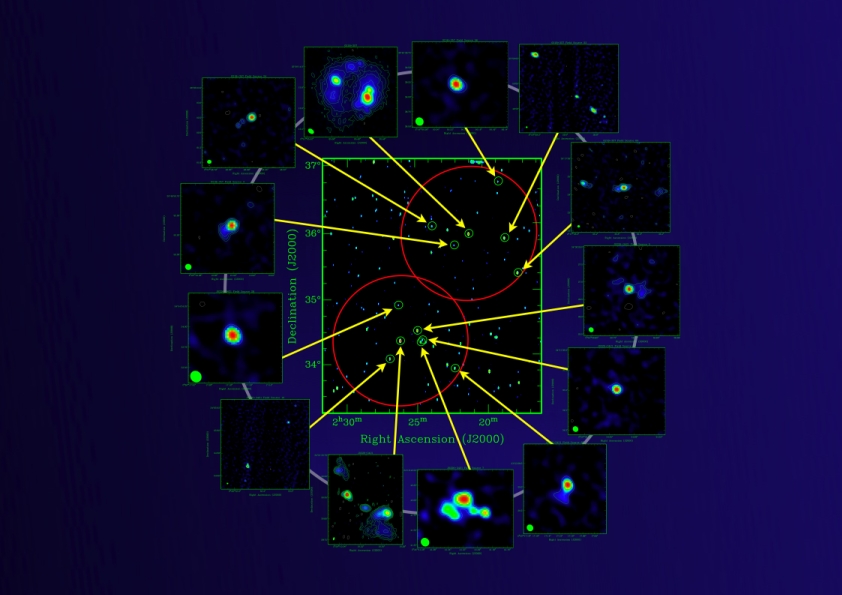SAO Research Highlights
Each issue of the SAO e-zine will feature a research highlight from one of the SAO teaching staff, either one of our instructors or project supervisors. This issue, Emil Lenc, an SAO project supervisors (and SAO alumni - Emil completed his SAO Masters in 2003) and current Swinburne PhD students, will discuss his wide-field eVLBI work. The technique of Very Long Baseline Interferometry (VLBI) combines the data recorded at several radio telescopes to investigate cosmic radio sources on milli-arcsecond angular scales - many orders of magnitude greater than that possible by a single radio telescope. However, the raw VLBI datasets that resulted from such observations were often too large (several to many tens of gigabytes) to be processed with computers available up until recently and so were heavily averaged in frequency and time to reduce their size. This averaging, together with limitations in imaging algorithms, limited the field-of-view of VLBI imaging to a few arcseconds. Today, improvements in computing power, storage and processing algorithms have opened up an opportunity to realise the full potential of VLBI imaging by processing datasets in their raw and unaveraged form - allowing the field-of-view to be increased to arcminutes or even degrees. Recently, as part of a collaboration with the Joint Institute for VLBI in Europe (JIVE), Emil has been testing new wide-field VLBI imaging techniques on a 327 MHz observation of two fields - a gravitational lens and a nearby Active Galactic Nucleus source. To maintain the maximum possible field-of-view Emil had to avoid all forms of averaging and so had to process the data-set in its entirety - all 72 GB of it! On top of this, careful inspection and calibration of the data was required. The 327 MHz band is notoriously difficult to work with as it is sensitive to changes in the ionosphere and to man-made radio interference that commonly exists at this frequency. Furthermore, to fully process both fields would have required an image approximately 4 tera-pixels in size, pushing even todays technology to the limit! Instead, since much of the field would in fact be empty, Emil used the results of a previous low resolution survey of the region as a guide to locate 141 positions in which sources were known to exist and he only imaged around these positions. After 3 months of inspection, calibration and imaging, Emil detected a total of 13 sources up to a degree away from the centre of each field - the remaining sources were too faint or extended to be detected by the equipment used in this observation. These 13 sources have added significantly to the few tens of sources that had previously imaged at this frequency. This observation has provided the highest resolution and most sensitive view to date of the low frequency sky and will enable us to better study the early Universe. The techniques and results of this work will also provide valuable input to upcoming instruments such as LOFAR, extended LOFAR, NTD, xNTD and SKA which will rely heavily on wide-field VLBI imaging techniques at the low frequency end of the radio spectrum.
Sources detected using wide-field
VLBI at 90 cm in 3.1 degree2
fields around the AGN J0226+3421 and the gravitational lens
0218+357. The central image is a low resolution WENSS image of the
surveyed regions.







